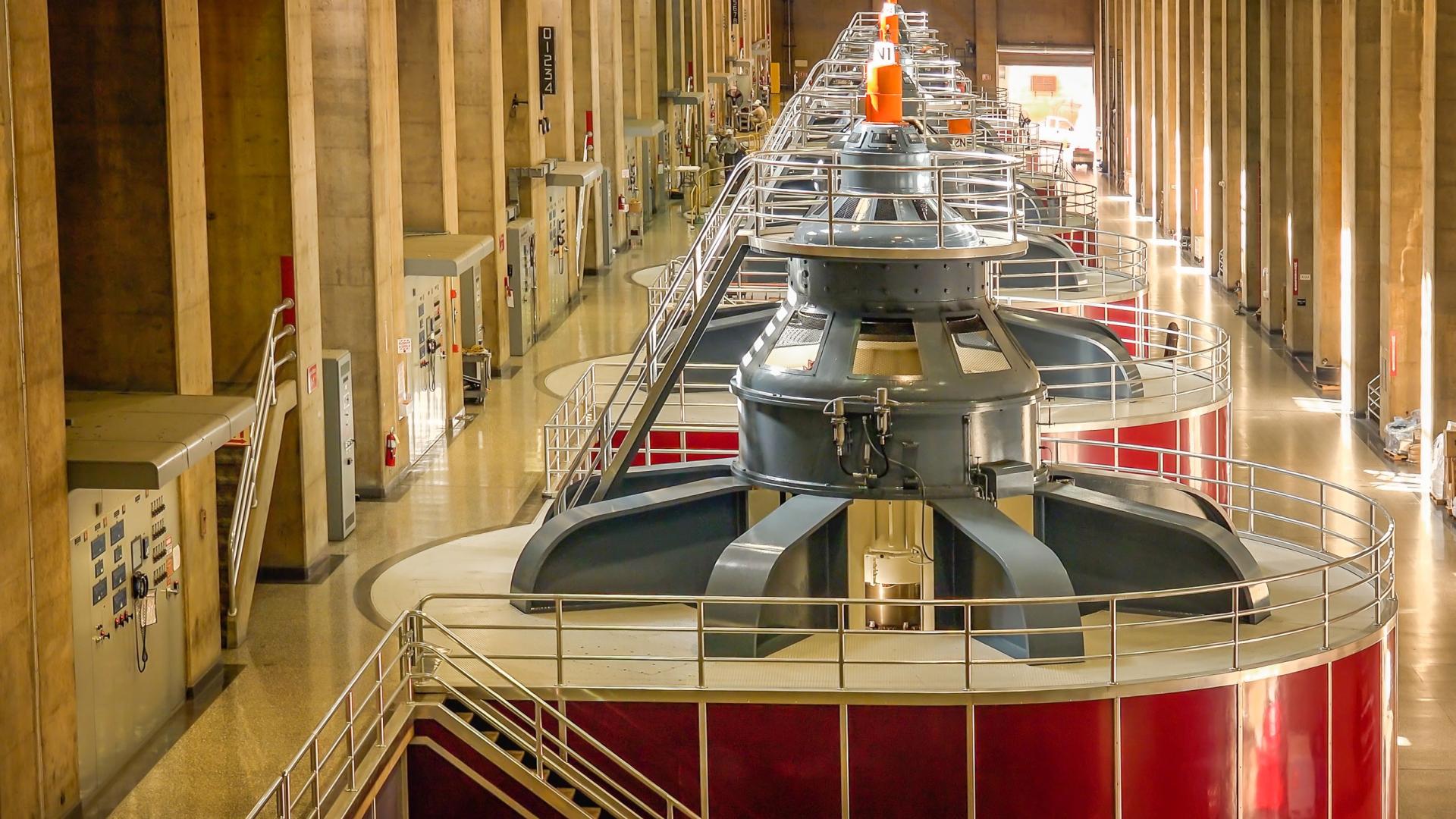Energy
Drought and water scarcity present unique challenges for the energy sector. All sources of energy require water in their production processes, and energy is required to extract, convey, and deliver water. Because energy and water are so interdependent, the availability and predictability of water resources can directly affect energy systems.
This map shows U.S. power plants in drought. Drought conditions are based on the latest U.S. Drought Monitor, with power plant data from the U.S. Energy Information Administration (EIA).
This map shows U.S. hydroelectric power plants in drought. Drought conditions are based on the latest U.S. Drought Monitor, with hydropower plant data from the U.S. Energy Information Administration (EIA).
Because energy and water are so interdependent, the availability and predictability of water resources can directly affect energy systems. Energy professionals need information on current drought conditions and outlooks in order to make informed decisions on cooling, alternative water supplies, pricing, and infrastructure security.
Learn MoreExtreme weather events can interact or cascade—where one disaster event triggers or changes the probability of another event. For example, drought conditions can increase the probability of large-scale wildfires, and droughts are often accompanied by extreme heat. By including drought in multi-hazard planning, a community can consolidate its resources and develop coordinated responses before a disaster.
Learn MoreBecause energy and water are so interdependent, the availability and predictability of water resources can directly affect energy systems. Energy professionals need information on current drought conditions and outlooks in order to make informed decisions on cooling, alternative water supplies, pricing, and infrastructure security.
Learn MoreExtreme weather events can interact or cascade—where one disaster event triggers or changes the probability of another event. For example, drought conditions can increase the probability of large-scale wildfires, and droughts are often accompanied by extreme heat. By including drought in multi-hazard planning, a community can consolidate its resources and develop coordinated responses before a disaster.
Learn MorePower Plants in Drought
Hydroelectric Power Plants in Drought
This map shows U.S. power plants in drought. Drought conditions are based on the latest U.S. Drought Monitor, with power plant data from the U.S. Energy Information Administration (EIA).
This map shows U.S. hydroelectric power plants in drought. Drought conditions are based on the latest U.S. Drought Monitor, with hydropower plant data from the U.S. Energy Information Administration (EIA).
Power plant data is available from the Energy Information Administration. The U.S. Drought Monitor map is updated weekly onThursday mornings, with data valid through that Tuesday at 7 am Eastern.
Hydropower plant data is available from the Energy Information Administration. The U.S. Drought Monitor map is updated weekly onThursday mornings, with data valid through that Tuesday at 7 am Eastern.
Because energy and water are so interdependent, the availability and predictability of water resources can directly affect energy systems. Energy professionals need information on current drought conditions and outlooks in order to make informed decisions on cooling, alternative water supplies, pricing, and infrastructure security.
Learn MoreExtreme weather events can interact or cascade—where one disaster event triggers or changes the probability of another event. For example, drought conditions can increase the probability of large-scale wildfires, and droughts are often accompanied by extreme heat. By including drought in multi-hazard planning, a community can consolidate its resources and develop coordinated responses before a disaster.
Learn MoreBecause energy and water are so interdependent, the availability and predictability of water resources can directly affect energy systems. Energy professionals need information on current drought conditions and outlooks in order to make informed decisions on cooling, alternative water supplies, pricing, and infrastructure security.
Learn MoreExtreme weather events can interact or cascade—where one disaster event triggers or changes the probability of another event. For example, drought conditions can increase the probability of large-scale wildfires, and droughts are often accompanied by extreme heat. By including drought in multi-hazard planning, a community can consolidate its resources and develop coordinated responses before a disaster.
Learn MoreWater Supply
Reduced water supply can lead to reduced energy production, and even to temporary closure of energy facilities.
Hydropower
Low water levels in reservoirs during drought conditions can reduce the energy that can be generated by hydroelectric dams.
High Temperatures
High temperatures that often accompany and exacerbate drought affect the energy supply chain, reduce biofuel feedstocks, and increase the risk of wildfire, which can impact energy infrastructure.
Drought Impacts on Energy Production
Production of all types of energy, including electricity, requires water. Because the energy sector is dependent on water availability, drought can severely impact energy systems.
- Thermoelectric electricity generation. Thermoelectric power plants use steam turbines to generate electricity using a variety of fuel sources. Large amounts of water are needed to generate steam and for cooling. Drought conditions can result in reduced plant efficiency and generation capacity and can also impact the supply chain for coal, natural gas, biofuel, and nuclear fuel.
- Hydroelectric power generation. Hydroelectric power is generated by funneling water through power plants contained in dam structures. When water levels in reservoirs become low, the force of water pressure required to turn hydro turbine blades is reduced, which affects productivity.
- Hydraulic fracturing and refining. Reduced water availability affects the production and refining of petroleum and natural gas. During droughts, hydraulic fracturing (or fracking) and fuel refining operations can require alternative water supplies or may be forced to temporarily shut down. Shutdowns can increase costs, which in turn can raise consumer prices.
- Biofuels. Reduced water availability and decreased soil moisture during drought can reduce the cultivation of biofuel feedstocks.
Drought Early Warning for the Energy Sector
Drought early warning is essential to prepare for and mitigate drought’s impacts on the energy sector. Energy professionals need information on current drought conditions and outlooks in order to make informed decisions on cooling, alternative water supplies, pricing, and infrastructure security.
The resources below are organized by the key components of a drought early warning system: (1) drought observation and monitoring; (2) drought planning and preparedness; (3) prediction and forecasting of drought; (4) communication and outreach to the public and affected sectors; and (5) interdisciplinary and applied research on topics of concern to drought-affected sectors.
Planning & Preparedness

Prediction & Forecasting





